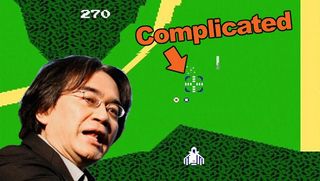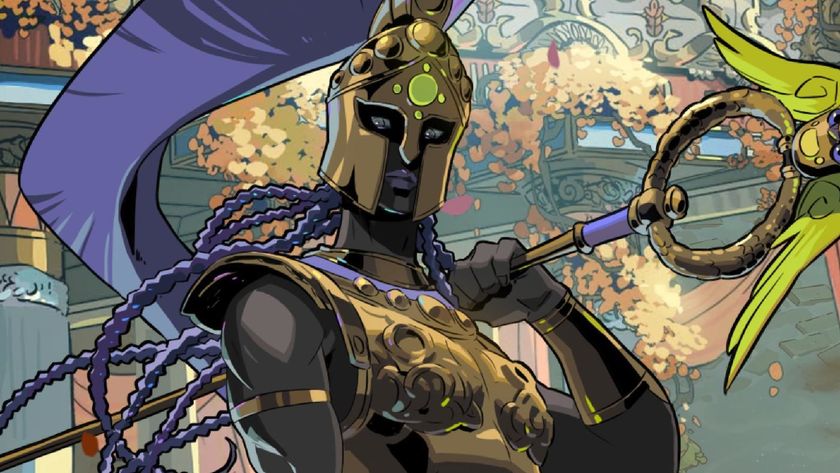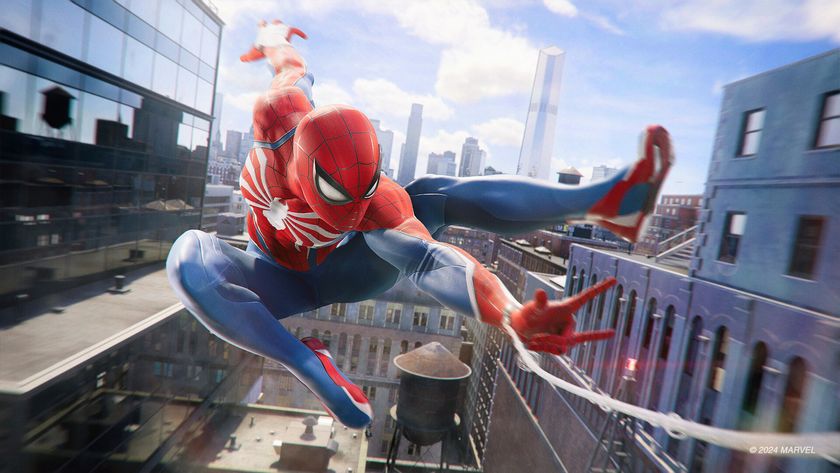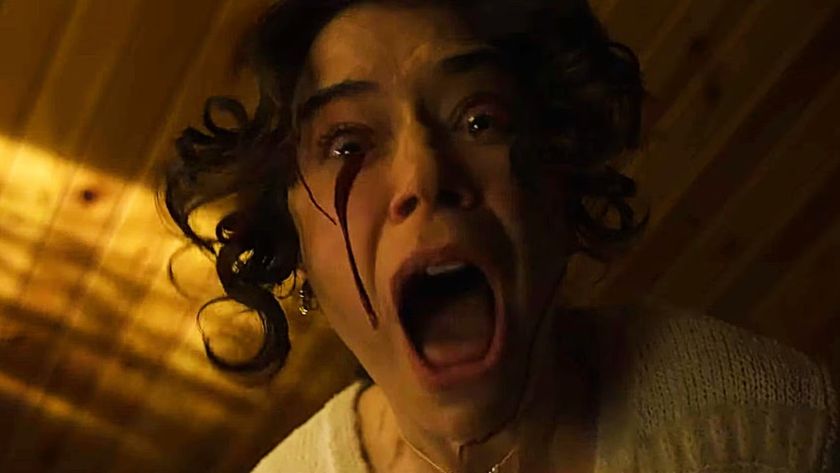Nintendo realises that making 3D games is hard, reconsiders plans
2D doesn't work the same as 3D. Whooda thunk?

File this one under "Probably should have thought about that before you started". Nintendo, a game development company at the cutting edge of handheld 3D games, with a rich and storied history in 2D 8-bit retro gaming,has beenhaving some pretty serious troublemaking 2D 8-bit retro gameson its cutting edge 3D handheld. If you thought converting old NES games to the 3DS for the downloadable 3D Classics series should have been an easy port, don't worry. Nintendo did too. Apprantly though, it's really bloody hard, as series Director Takao Nakano explains in a recent edition of Nintendo's excellent Iwata Asksdeveloper interview series. I can't help feeling though, that some of theissues making the processso bloody hard should have been really bloody obvious too.
Vertically scrolling shooter Xevious, for example, threw all kinds of trouble at Nintendo whenit realised that the effects of having bullets fire at your ship from the ground (easily fudged together in a 2D game by simply laying them on a flat layerover the background) became really disorienting and a bit crap when those layers were simply separated out into 3D. Rather than appearing for be launched from the ground, the bullets suddenly appeared in mid-air on the same plane as the player's ship, forcing the reprogramming of both graphics and gameplay in order to add a firing delay. Same situation in reverse when the player's ship was bombing ground targets. Nintendo President Satoru Iwata estimates that converting a game like Xevious to 3D takes 20 times more work than a normal port.

A 3DS version of the NES' Tennis was scrapped altogether, because it was found that 3D added pretty much nothing in practical terms. The reason? The 2D game created such a decent approximation of a 3D court with the forced perspective of its graphic design that putting it in genuine 3D didn't actually improve anything. And with the ball/racket collision detection needing a full reprogramming once the ball was moving in simulated 3D space as opposed to simply movingvertically across thescreen, the port "took as much work as making a tennis game from scratch". And with the 3D being so underwhelming, as Nakano-san explains, "we had to conclude that the resultant value would not be worth our hard work". The moral of this one? Never underestimate the effectiveness of old-school game design ingenuity. What is old is not necessarily broke, and it doesn't always need fixing.
Of course, while I'm not going to pretend that I know more about game design than Nintendo (that way lies only disappointment and a roaring great smack-down should one ever be asked to prove said madness-claims), I can't help feeling that some of these problems should have been pretty glaring from the off. 2D and 3D games operate completely differently in mechanical terms, even if a 2D game is simulating a 3D environment, so perhaps Ninty should have seen this coming. But if it didn't, perhaps that explains why the 3D Classics series is currently only planned to run to six titles.
Either way though, I fully applaud the initiative, and I really hope Nintendo (and other 3DS devs) continue it as the eShop service matures. 3D SNES games with lots of lovely parallax... Oh how I dream of them...
July 13, 2011
Vertically scrolling shooter Xevious, for example, threw all kinds of trouble at Nintendo whenit realised that the effects of having bullets fire at your ship from the ground (easily fudged together in a 2D game by simply laying them on a flat layerover the background) became really disorienting and a bit crap when those layers were simply separated out into 3D. Rather than appearing for be launched from the ground, the bullets suddenly appeared in mid-air on the same plane as the player's ship, forcing the reprogramming of both graphics and gameplay in order to add a firing delay. Same situation in reverse when the player's ship was bombing ground targets. Nintendo President Satoru Iwata estimates that converting a game like Xevious to 3D takes 20 times more work than a normal port.
Sign up to the 12DOVE Newsletter
Weekly digests, tales from the communities you love, and more

A 3DS version of the NES' Tennis was scrapped altogether, because it was found that 3D added pretty much nothing in practical terms. The reason? The 2D game created such a decent approximation of a 3D court with the forced perspective of its graphic design that putting it in genuine 3D didn't actually improve anything. And with the ball/racket collision detection needing a full reprogramming once the ball was moving in simulated 3D space as opposed to simply movingvertically across thescreen, the port "took as much work as making a tennis game from scratch". And with the 3D being so underwhelming, as Nakano-san explains, "we had to conclude that the resultant value would not be worth our hard work". The moral of this one? Never underestimate the effectiveness of old-school game design ingenuity. What is old is not necessarily broke, and it doesn't always need fixing.
Of course, while I'm not going to pretend that I know more about game design than Nintendo (that way lies only disappointment and a roaring great smack-down should one ever be asked to prove said madness-claims), I can't help feeling that some of these problems should have been pretty glaring from the off. 2D and 3D games operate completely differently in mechanical terms, even if a 2D game is simulating a 3D environment, so perhaps Ninty should have seen this coming. But if it didn't, perhaps that explains why the 3D Classics series is currently only planned to run to six titles.
Either way though, I fully applaud the initiative, and I really hope Nintendo (and other 3DS devs) continue it as the eShop service matures. 3D SNES games with lots of lovely parallax... Oh how I dream of them...
July 13, 2011

Hades 2 devs say "we have not recast any of our characters" in the roguelike amid concerns during the ongoing SAG-AFTRA video game strike

"It's almost like printing money": Former Sony exec says PC ports of PlayStation games are too valuable to ignore, and he wanted to see more first-party games come to PC
Most Popular





